Intel has finally announced the 14th-gen Meteor Lake architecture at its much-awaited Innovation 2023 event. According to the company, the new architecture is set to revolutionize the computing experience with on-device AI capabilities and power-efficient performance. The new architecture is built on Intel 4 process technology and brings integrated Arc-based GPU to mobile processors. So if you want to learn more about Intel’s upcoming 14th-Gen mobile processor, we have included all the details here.
Meteor Lake Is Built on Intel 4 Process Technology
Intel’s 14th-gen Meteor Lake mobile processors mark a huge paradigm shift in the company’s history. With Meteor Lake processors, Intel is making its largest architectural change in 40 years. The new processors are built on Intel 4 process technology, which delivers power efficiency not seen in Intel chips before.
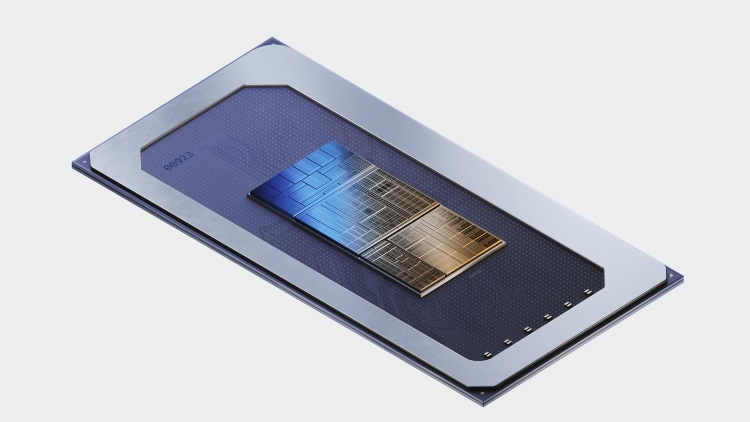
If you are wondering what exactly Intel 4 means, well, the company did away with the “nm” nomenclature in 2021 and came up with new naming conventions in line with the rest of the foundries like TSMC and Samsung. Intel 4 (earlier known as Intel 7nm) has a transistor density equivalent to TSMC’s 5/4nm and much higher than Samsung’s 4nm process node. So to truly reflect the parity across third-party foundries, Intel has come up with a new naming convention.
Intel 4 process node, despite being fabricated on the 7nm process, offers 20% better performance per watt than the previous Intel 7 process. Not to mention, Intel 4 process technology fully utilizes EUV lithography for better efficiency and performance per watt. And that’s why the Meteor Lake chips are going to be the most power-efficient processors made by Intel to date. Having said that, keep in mind that the new Intel 4 process node is only used in the Compute tile, which consists of CPU cores – both P and E cores.
Intel Meteor Lake Has Four Unique Tiles

Intel is calling Meteor Lake the largest architectural change because the company has managed to connect four disaggregated tiles and created a system-on-chip. It has integrated four independent tiles, including Compute, SoC, GPU, and IO, on 14th-Gen mobile chips. These tiles are connected through Intel’s industry-leading Foveros 3D packaging technology which makes it act like a monolithic SoC, a chip on a single die. Now, let’s go ahead and learn what each tile does.
Compute Tile with New P-Cores and E-Cores
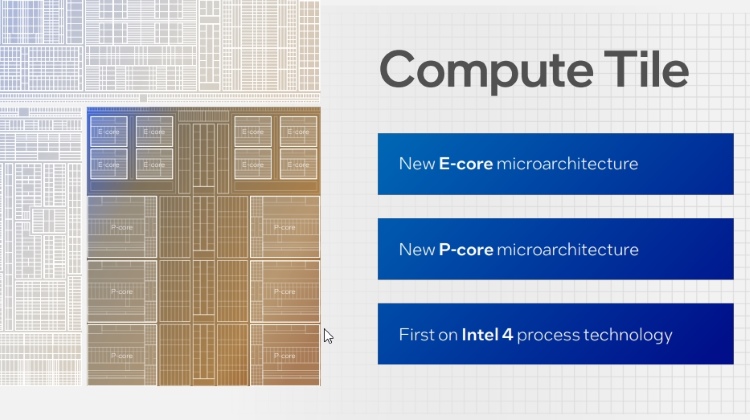
For the Compute tile in its 14th-Gen Meteor Lake processors, Intel has developed a new E-core (Crestmont) and P-core (Redwood Cove) microarchitecture. They are built on Intel 4 process technology that offers great power efficiency and performance.
On top of that, Intel has partitioned compute-intensive IP cores and attached them independently to the SoC fabric. These IP blocks can access memory independently and avoid keeping the core complex busy. As a result, it optimizes the power management of the chip.
SoC Tile with Low Power E-Cores
The SoC tile in 14th-Gen Meteor Lake is the most prominent one as it enables hybrid computing, which was first envisioned on 12th-Gen Alder Lake processors. It’s freshly built on 3D performance hybrid architecture. It packs in low-power island E-cores for an entire class of low-powered workloads on your laptop.
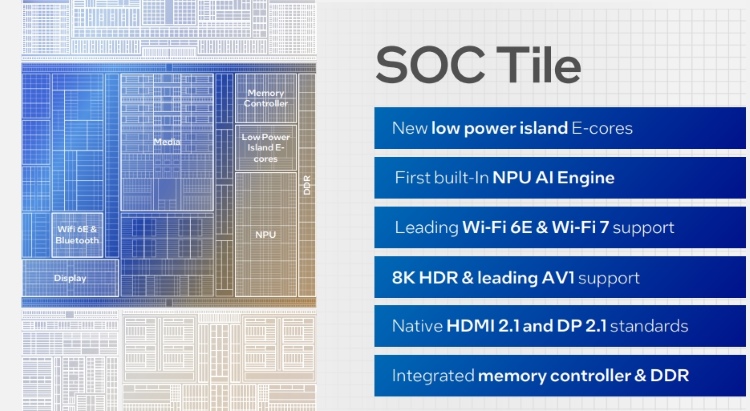
For example, if you are playing media, the low power island E-cores can kick in and deliver performance without activating the P or E core in Compute. This will significantly save battery and enhance power efficiency.
Next, the SoC tile features an integrated NPU (Neural Processing Unit) for on-device AI capabilities. I have discussed NPU in great detail below, so keep reading. Apart from that, it offers Wi-Fi 6E, Wi-Fi 7, and Bluetooth support onboard. The best part is that Intel has brought AV1 support with the Meteor Lake processors. It’s part of the Media engine, which can also render 8K HDR videos. Not to forget, the SoC tile brings support for native HDMI 2.1, and DisplayPort 2.1 standards, and packs in an integrated memory controller as well.
New Intel Arc-based GPU Tile
For discrete-level performance on laptops, Intel has gone all in and incorporated an Arc-based GPU on 14th-gen Meteor Lake processors. The A-series graphics from Intel has been well received and it has done well to add an integrated GPU based on the Arc architecture to its latest mobile processors.
In comparison to Intel Iris X graphics in 12th-gen Intel processor, the new Meteor Lake GPU delivers 2x performance per watt. That’s amazing, right?
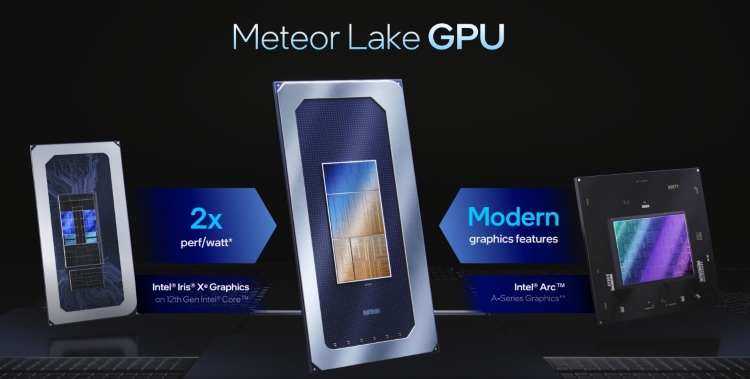
And to make the GPU tile more power-efficient, Intel has made several changes in the architecture. It has removed the Media IP core from the GPU and both are independently attached to the core complex and memory. This will reduce significant traffic and enhance power efficiency.
For example, in earlier architecture, the core complex needlessly remains on during media playback due to memory access via Ring fabric. But with the new architecture on Meteor Lake, all IP blocks have independent paths to memory. So, GPU and core complex need not be engaged, resulting in better battery life.
IO Tile with PCIe Gen 5, Thunderbolt 4
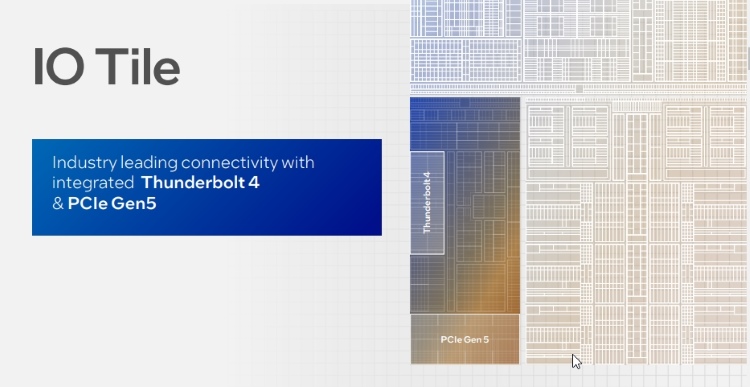
Intel 14th-gen Meteor Lake processors also feature a separate IO tile to provide the best input/output options on laptops. It supports the latest connectivity standards like Thunderbolt 4 and PCIe Gen5. So expect unparalleled speed while using new-gen SSDs and external GPUs on Meteor Lake-powered laptops.
Integrated NPU on Intel 14th-Gen Meteor Lake Chips
We all know that Apple M-series chips come with a dedicated Neural Engine. Of late, M-series MacBooks have become a favorite machine for both developers and users to run on-device AI models. I’ve been using local AI models on my Intel-powered desktop machine, and I know the experience is not that great as it lacks a dedicated AI engine.
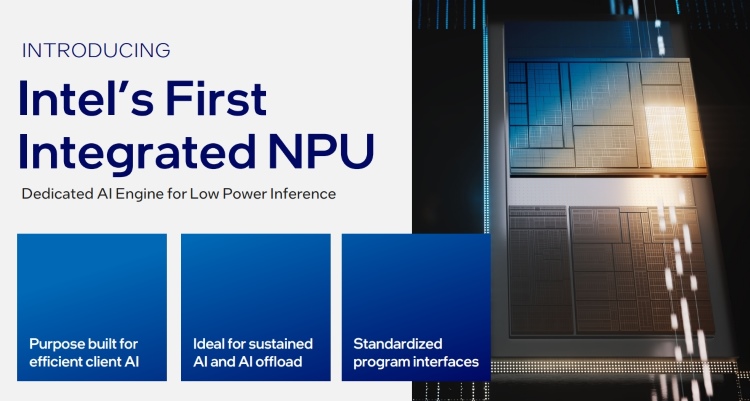
But with the Meteor Lake processor, Intel is going to deliver AI at scale on laptops. The 14th-gen Meteor Lake processor has a built-in NPU as part of the SoC tile. This is the first time Intel has integrated an NPU directly into the processor. For sustained AI workloads, the NPU is going to perform much better than the CPU or GPU. Generally, the inference latency is very high on previous-gen Intel processors, but that is going to change with Meteor Lake.
In addition, the AI engine is compatible with frameworks such as OpenVINO for deep learning model optimization. Finally, Intel has also integrated AI computing engines into the CPU and GPU. For low-latency AI tasks, the CPU will work well, but the GPU can deliver great throughput for 3D applications, rendering, and media-related tasks.


















